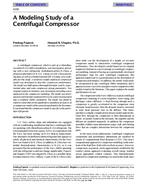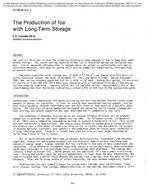Experiments with a fan-driven convector used for both heating and cooling are described in this paper. Only the cooling situation is considered. The convector is positioned in the upper corner of the room, and from there the cold air is let out through the device along the ceiling. The airflow coming from the diffuser is partly controlled by the momentum flow and partly from gravity forces, where the thermal load in the room and the temperature difference between room air and supply air affect the airflow from the convector.
The convector system was tested in the same test room in which many regular ventilation systems were tested earlier to be able to compare airflow from the convector system with regular ventilation systems at a later stage of this research. The heat load in the room consists of a thermal manikin sitting at a desk, a computer, and a desk lamp producing a total heat load of 210 W.
From the measurements, limitations for the fan-driven convector are set up in a design graph based on flow elements from the convector, a maximum velocity assumption, and a critical vertical temperature gradient in the room. The limits for the curves in the design graph are found by analyzing the acceptable conditions for the supply flow rate and the temperature difference for the convector system.
The paper shows that the air distribution from the convector results in comfortable velocity and temperature conditions with a heat load of 210 W. This is also confirmed by the draft ratings, which in all the experiments are below 14%. The limit of the cooling capacity of the convector is reached if the heat load in the room is increased to approximately 350 W, and from the design graph it is found that in this case it will be difficult to obtain a comfortable situation in the room without draft.
Units: SI
Citation: ASHRAE Transactions, Vol. 113, pt 1, Dallas 2007
Product Details
- Published:
- 2007
- Number of Pages:
- 7
- File Size:
- 1 file , 1000 KB
- Product Code(s):
- D-DA-07-036


